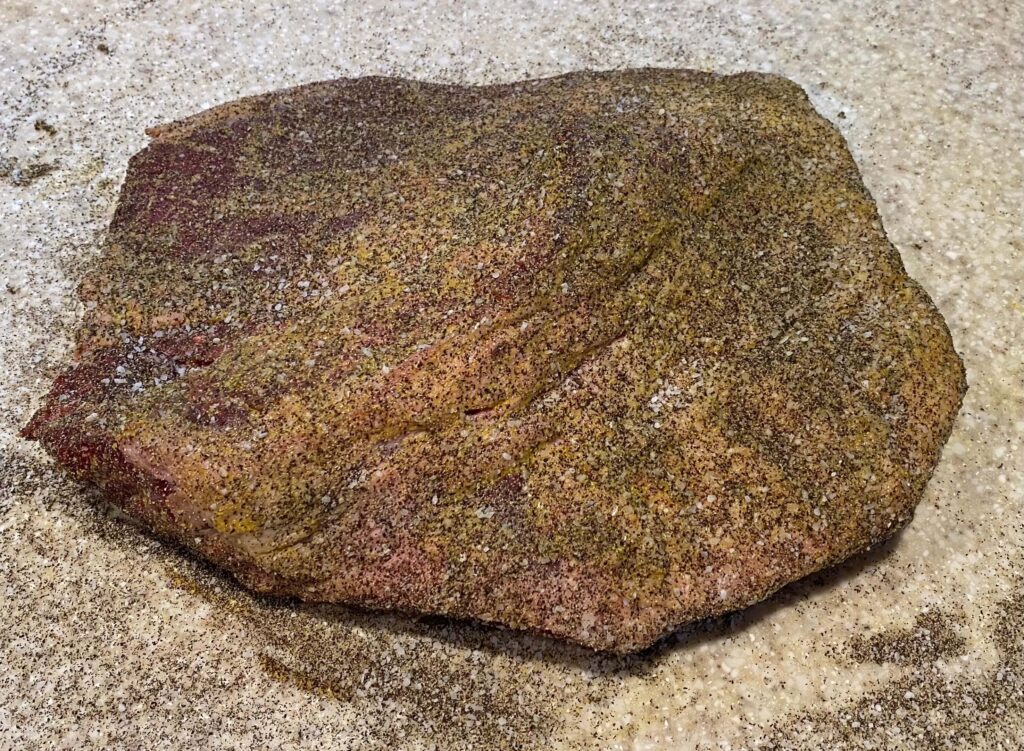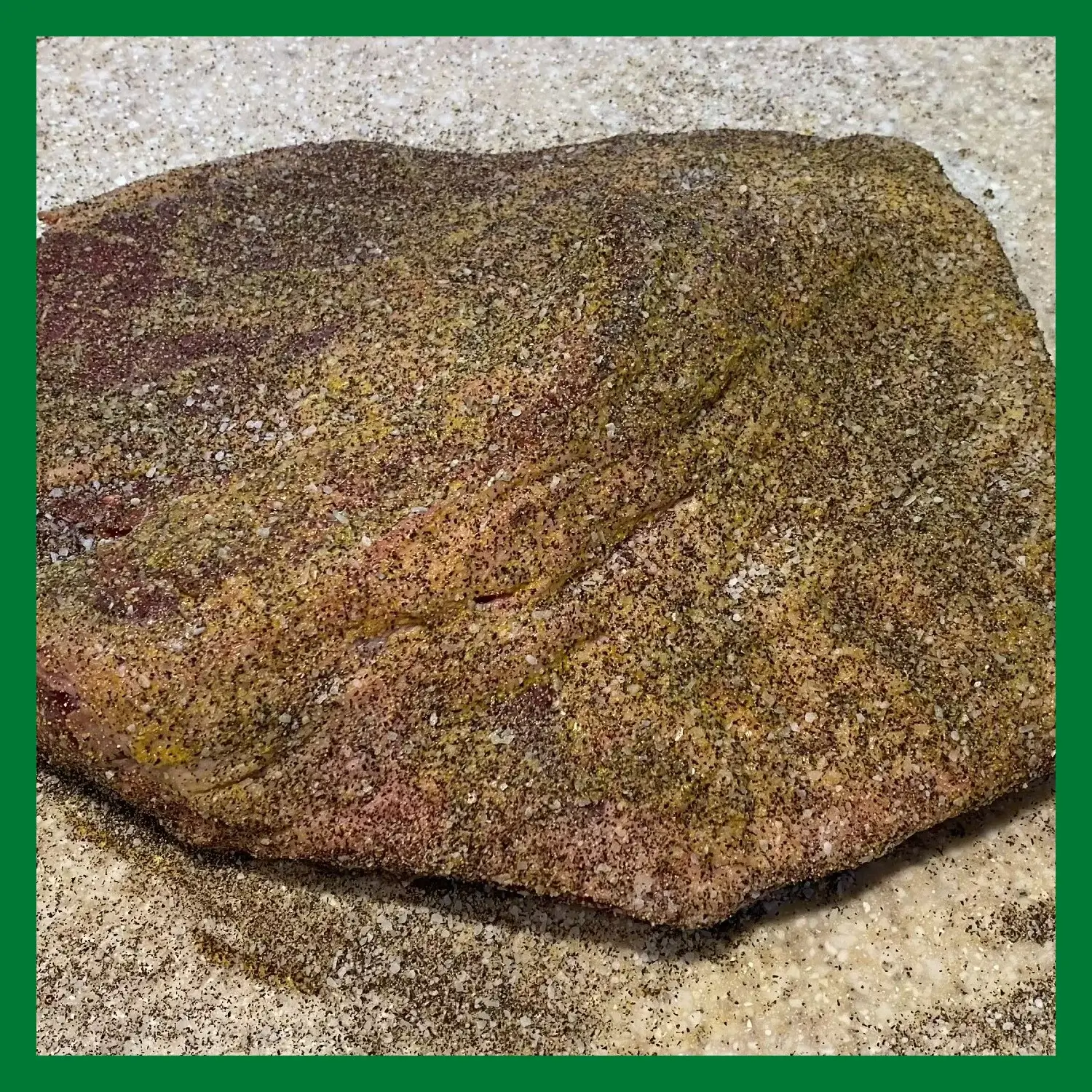When it comes to grilling and smoking meats, you’ll often come across recipes that recommend using a dry rub. Many times we get the question, how to use dry rub on ribs, brisket, or pork shoulder. Using a dry rub is quite simple – but there are a few techniques that will help you get the most out of your cook.

What is a meat binding agent?
In many barbeque recipes, or YouTube videos, you may see the chef apply a binding agent to a cut of meat like pork shoulder. The sole purpose of a binding agent is help your dry rub adhere to the meat. Two of the most common binding agents are mustard and olive oil, or even hot sauce. When cooking chicken cutlets, you may be familiar with using an egg wash to help the bread crumbs stick to your cutlets before frying.
You may be wondering if a binding agent like mustard will add to the taste, but when you smoke a meat slow and low for several hours, the taste will burn off and you’ll be left with the amazing taste of the meat, smoke, and your rub.
Applying your binding agent to meat
When learning how to use dry rub, the first step is to pat your meat dry using a paper towel. You want to avoid having any moisture on the meat to ensure that your dry rub will stick to it during the cook. Once the meat is sufficiently dry the next step is to apply the binding agent. We typically use mustard, but we’ve also had great success with olive oil, and hot sauce depending on the flavor that we’re going for. Olive oil is a great binding agent for smoked wings.
When to use a binding agent
We recommend using binding agents when cooking meats slow and low for several hours. This would be cuts like pork shoulder, brisket, or ribs. As mentioned above, when smoking wings, despite the recipe only having a 40 minute cook time, we’ll use olive oil to help adhere our seasoning. Here’s an overview on some of our favorite meat rubs and seasonings.
That being said, a binding agent isn’t necessary all the time. We almost always cook steaks, burgers, chicken breasts without using a binding agent. It may be as simple as salt and pepper, or if we’re looking for a more complex flavor we’ll add in garlic salt, or use one of our homemade rubs.
How to use dry rub on pork shoulder, brisket, and ribs
Depending on the flavors that you’re looking for, there are many different types of dry rubs that you can apply. There are countless rubs available online – and it’s quite easy to make one yourself. When applying dry rub, we took a few notes from Aaron Franklin. The first one being the wet hand, dry hand method. The second one being that salt and pepper makes a fine dry rub.
The wet hand / dry hand method is a technique that helps keep your hands clean to prevent any contamination. The idea being that one hand should be used to apply your binding agent, and patting your rub, with the other hand used for shaking your dry rub evenly across the cut of meat. One thing to keep in mind, you’ll want to have all of your ingredients open and ready. Using one hand, you can apply mustard or olive oil, and using that same hand, you can flip the meat to ensure you have coverage on both sides. The next step is shaking your dry rub onto both sides of the cut. Once you have generously covered one side, use your “dirty hand” to flip the meat, and shake the rub on the back side of the meat.
Some folks will use bbq gloves to apply dry rub – but this isn’t necessary if you’re using the wet hand dry hand technique.
When to apply dry rub to meat
This is where it gets a little controversial – every pit master will have their own opinion on when to season their meats. The short answer is that a dry rub can be applied in as little as one hour prior to beginning your cook. The same is true with smoked salt, while some add it to dry rubs, others will only use it as a finishing salt. The best part of grilling and smoking is the experimentation – so figure out what works best for you.
That being said, if you’re dry brining a turkey, or some other cut, we will opt for at least twenty four hours. The name dry brining essentially means prolonged exposure to ensure that you’re able to draw water into your meat for a juicier cook.
When it comes to using a dry rub on pulled pork, we’ll typically apply it the night before a smoke. Quoting Aaron Franklin again, when it comes to brisket, he’ll apply salt and pepper one hour before the beef hits the grill grates.

